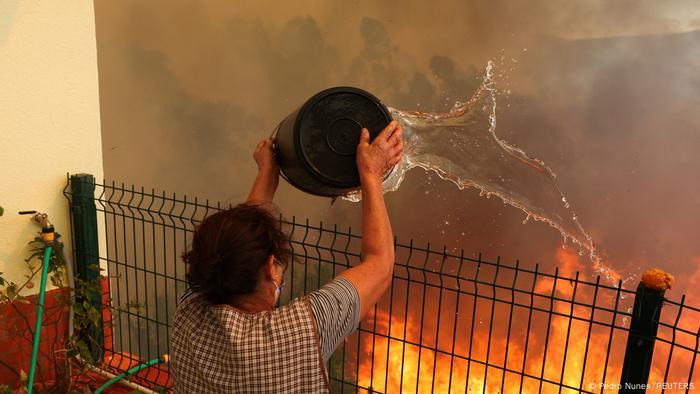
Wildfires in Europe are becoming more severe. With climate change intensifying droughts and reducing summer rain, wildfire risk is predicted to more than double by 2100. Do we have to learn to live with fires?In a single week in the fall of 2024, ravaging fires burnt down more than 100,000 hectares of land in Portugal -- an area roughly the size of Hong Kong. Plumes of smoke were visible from space. It was one of the largest wildfires in Europe that year, killing at least seven people.
Fires on that scale are likely to happen more often, scientists say.
"Many parts of Europe are facing a large increase in multi-year droughts, leading to an increased probability of extreme fires," said Thomas Elmqvist, Environment Director of the European Academies Science Advisory Council (EASAC). "Some areas are likely to experience severe events every two years."
About 60,000 forest fires rage through the EU every year, causing E2 billion ($2.2 billion) in economic losses, the scientists laid out in a report published today. On average, they scorch an area nearly twice the size of Luxemburg -- year by year.
Global warming, changes in land usage, and urban development exacerbate fire outbreaks.
Europe is the world's fastest warming continent. Over the past 30 years, temperatures have risen twice as much as the global average. Elmqvist points to the established link between climate change and elevated fire danger. Increasing droughts and less rain are expected to double the fire risk by 2100.
Increasing urbanization is another culprit for the flames. Abandoned farmland and unmanaged vegetation growth have created vast landscapes of flammable biomass, the scientists analyzed. Extensive monocultures, particularly of conifers, pines, and eucalyptus trees also ignite fast.
The highest risk in Germany, for example, is in the northeastern part of the country with its large pine plantations, said Elmqvist.
Less frequent but more intense wildfires ahead.
After tracking wildfires for two years, he determined that both the frequency of fires and the overall area affected have declined in Europe, attributing this change to "our increased ability to combat them."
However, the fires will grow bigger and be more intense.
The researchers discovered that Spain, Portugal, Italy, and Greece are the countries most impacted.
Mediterranean countries are better prepared for fires compared to other European countries, says Claudia Berchtold from the Fraunhofer Gesellschaft. She is looking at research like the new EASAC study to formulate a strategy for Europe on how to deal with wildfires.
"For instance, in countries like Germany or the Netherlands, even a relatively minor fire would encounter systems that are less equipped," she noted.
The study discovered that more than double the number of urban areas face risks from fires in Europe compared to both North America and Asia.
“Developments have been constructed within pine forests without considering the consequences when large wildfires occur,” stated ecologist Pierre Ibisch, a co-author of the research. “This undoubtedly poses significant risks.”
This incident occurred in the small town of Borkwalde located within Germany’s state of Brandenburg. Starting from the year 2000, residents gradually moved deeper into the woods, despite significant wildfires prompting evacuations in a neighboring town, as mentioned by Ibisch.
Options: Implementing controlled burns, rehabilitating habitats, and conducting educational programs
EASAC scientists suggest that issues such as these could be prevented if landscape planners, foresters, and farmers collaborate. They additionally advocate for increased public awareness and discussion regarding the evolving characteristics of wildfires.
Ibisch mentioned that people residing near forests or those who move into forested areas often fail to realize the extent of the fire threat present and persistent. He emphasized that there is an opportunity to mitigate this danger through proper land management practices.
Experts emphasize the importance of swiftly and uniformly implementing regulations like the EU’s Nature Restoration Law, particularly for sustainable forest management and the restoration of high-carbon peatlands. Permitting livestock to roam freely across areas and intentionally setting controlled burns during dry periods could significantly escalate fire intensity. “It isn’t true that every fire is detrimental,” noted Elmqvist.
Low-intensity fires can indeed be part of a natural cycle and stimulate new growth.
Alternative approaches include digitizing forest maps for improved surveillance. Artificial Intelligence can assist in analyzing drone imagery of wildfires, as well as tracking the rapid regrowth of flammable plants following grazing activities.
Edited by: Sarah Steffen
Copyright 2025 DW.com, Deutsche Welle. Distributed by Tribune Content Agency, LLC.
No comments:
Post a Comment